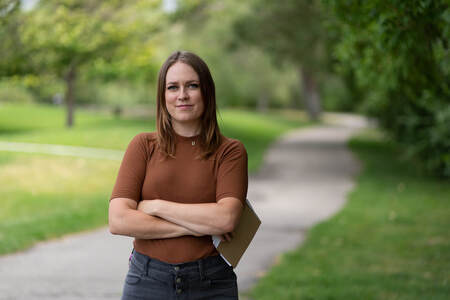 Reporter Jessica Miller. (Francisco Kjolseth) Reporter Jessica Miller. (Francisco Kjolseth) By Anjanette Delgado I’d been researching the role of impact producers in journalism (we need more of these, by the way) and documentary films when I came across new legislation in Utah to regulate its troubled-teen industry. The story behind the law involves a journalist, two lawmakers in two states, a celebrity influencer, an activist group and an impact producer all working on the same issue. Their individual yet connected actions challenge us to think about the roles journalism and funding play in action, the importance of taking the whole system into account and, in the end, what motivates everyone to keep going. *** One Sunday night in May 2019, a dozen students began fist fighting at a troubled-teen center in southern Utah. Cops were called. The SWAT team showed up. The night ended in multiple injuries, and more than half of the dozen rioting students were charged.“We were so reactive to this news,” said Jessica Miller, a reporter at The Salt Lake Tribune newspaper. She needed to know more, to know what led to the riot. “What could be learned if we were more proactive?”So she spent the time between then and now — minus what it took and still takes to cover the pandemic — being more proactive about that story. Digging until she uncovered one of the most outrageous stories in her two-plus years investigating Utah’s troubled-teen industry: a girl in zip ties forced to sit in the cold, dirty water of a horse trough. Back then, in 2019, the troubled-teen industry fell into a gap between beats. Miller started learning more by submitting public records requests. She reported deeply on staff members, and eventually the school with the riot — Red Rock Canyon in St. George — shut down. She sought out and earned a fellowship in data journalism from the University of Southern California Annenberg School of Journalism that included funding, training and mentorship. “We started looking at this industry as a whole — how much other states are spending to send kids here,” Miller said. She filed a large records request. “Inspection reports from the office of licensing,” she said. “$6,000.” Public records are public, yes, but governments are allowed to charge for the labor and copying costs of satisfying requests. Newsrooms have limited budgets for records or sometimes can’t pay at all. “We couldn’t pay it,” Miller said. “At first we didn’t do it. We tried to figure out other ways to do it.” Right around then — in September 2020 — Paris Hilton’s documentary film, This is Paris, premiered on YouTube. ***
Rebecca Mellinger, a USC grad, is an impact producer working with Hilton. In the documentary, the actress and influencer comes to grips with her own time spent at one of these troubled-teen centers in Provo, Utah. “I was verbally, mentally and physically abused on a daily basis,” Hilton said. “I was cut off from the outside world and stripped of all of my human rights.” Hundreds of people emailed Hilton every day, and more posted online. “All of these survivors are taking to social media in the thousands,” Mellinger said. Clearly they had momentum — momentum they could use to help stop abuse from happening at these facilities, to help save at-risk children now and in the future, and to support abuse survivors. Mellinger and Hilton brainstormed a three-pronged approach:
The work is nearly full-time (sometimes they’re busier than others) and has been going on for months. The public awareness campaign is what led her to Miller. *** Remember the $6,000? Miller wanted to use it not just to get the public records but also to build the first free, searchable database of reports on violations at Utah’s troubled-teen treatment centers. “After doing this work for more than a year or so, getting so many emails from parents asking ‘I want to send my kid to this place, what do you know?’” Miller said, “it showed us how much of a need there was.” Mellinger asked how they could support Miller’s work, and though they were working on the same issue, journalism’s code of ethics requires keeping an arm’s length distance from those who are trying to influence the news. “She offered to pay but we felt uncomfortable because she’s an activist,” Miller said. Instead, The Salt Lake Tribune launched its first crowdfunding campaign (using MoonClerk) and set a goal of raising $10,000 — the cost of the records plus coding, etc. Miller wrote a story explaining why: “It is easier for a person to go online and find the latest inspection for a restaurant than it is to find reports on whether a youth residential treatment center is keeping vulnerable children safe.” In less than 24 hours, they raised $11,000 from more than 130 donors, including Hilton. “When I think about the database, I think it showed us that we can fundraise in this somewhat nontraditional way. … that that’s a possibility,” Miller said. “Clearly there was a need in this community and it was wider than just our subs [subscriber] base.” The fundraiser took place in October, the records arrived in February, and after some data cleaning the database published in March 2021. That’s when Miller learned about the horse trough. *** It started as a routine police call. In June 2018, a 17-year-old girl living at a treatment center for troubled teens had hit a staff member in the face during a therapy session involving horses. But when deputies arrived at the small ranch in southwest Utah, staff said the suspect was waiting “in the trough.” Confused, the deputies walked back to the corral. There they found a girl sitting in a tub of dirty water up to her torso. When the girl stood, they saw her hands were zip tied behind her back. One deputy yelled for a staffer to get her out of the water, according to the police report. Another cut her loose. The girl told deputies she had tried to run away from Havenwood Academy, a 16-bed treatment center located a few miles from the horse property. When a staffer had tried to stop her, she had thrown a punch, she told them. By the time the deputies arrived, she had been in zip ties for about 30 minutes, she told them, and in the horse trough for about 20. — From “A girl, her hands zip tied, was forced to sit in a horse trough,” March 26, 2021. In the story, Miller quite quickly turns from this incident at Havenwood to the systemic problem of Utah’s approach to regulating the youth treatment industry — investigations, but no individual or institutional penalties. “It’s kind of been our goal all along, past the riot, (of) trying to tell stories of individual instances and put it in the greater backdrop of industry, particularly in Utah,” she said. Miller’s editor, Lauren Gustus, shared the story in an email thanking Tribune readers. “The woman who pioneered putting girls in troughs remained Havenwood’s equine director until she quit of her own volition,” Gustus wrote. “She left around the time Jessica and a small team of journalists published a database that included infractions at Havenwood and elsewhere. This database was created with your support — donors and subscribers helped pay the thousands of dollars in open records fees we had to pay to secure the infraction reports.” *** In the meantime, Hilton organized more than 100 fellow survivors in a march past Provo Canyon School. Utah Sen. Mike McKell reached out to discuss legislation, Mellinger said. Sen. Sara Gelser of Oregon, a state that sent some of its foster kids to these centers, including Red Rock and Provo, became perhaps the most outspoken lawmaker. (These aren’t Utah kids, Miller told me. Ninety percent of them are from out of state.) Finally, in March 2021, Utah passed McKell’s bill requiring troubled-teen facilities to be investigated four times a year and to report when they administer medication to a patient. Gov. Spencer Cox signed it, saying “first and foremost, it’s about protecting the lives, especially, of our young people in these programs.” The law went into effect in May, two years after students rioted, less than a year after Hilton rallied in Provo and a little more than three months after it was introduced. It was the state’s first legislation in 15 years to address mistreatment at youth facilities. “It happened so quickly, but people were ready to talk about it where they weren’t two years ago,” Miller said. In an April email to readers, Gustus quoted Sen. McKell from the first committee hearing: “There’s a natural tension between the press and the Legislature from time to time. I think Jessica Miller has been fantastic. I don’t know where she is in the room, but I think she’s done a fantastic job with her investigative reporting at The Tribune, finding some of the failures in the state of Utah. And I think that’s to be appreciated.” *** Breaking this story down to its parts, we can begin to see how a major industry treating mostly out-of-state kids landed on Utah’s public policy agenda:
“I do hope through this case study of Paris … (that) anyone with a platform looks at this and does want to pursue something they care about as well,” Mellinger said. Mellinger and Hilton are working with Breaking Code Silence to get a national bill passed and keep people engaged in the issue through Change.org and email updates. “We’ve really made it a priority to create a coalition of organizations,” Mellinger said. They still want Provo Canyon School shut down, an early goal of their campaign, but their focus has shifted more toward policy. “We’ve got a long road ahead, but obviously the momentum is there,” Mellinger said. “An impact producer morphs based on the project,” Mellinger said. “That’s the joy of it. It’s about the solution.” Miller, for her part, continues to report the stories of abuse and keeps a “very close eye” on whether the new law is being followed. She’s collaborating with KUER public radio and APM Reports on a podcast about her investigation called Sent Away. It will be released in late fall. “The hard part about this industry as a whole is you can call anything therapy,” she said. “No one’s questioning ‘hmm, is that therapy?’” That is, no one was. More: Inside Utah’s troubled teen industry: How it started, why kids are sent here and what happens to them To support Miller’s work and The Salt Lake Tribune, go to sltrib.com/donate. Anjanette Delgado is the senior news director for digital at the Detroit Free Press and freep.com, part of the USA Today Network. Email: [email protected], Twitter: @anjdelgado. ### By Johanna Blakley
Remember my TED.com talk, Lessons from Fashion’s Free Culture? Well, a Fellow at Harvard’s Nieman Center, Tomer Ovadia, interviewed me recently about what lessons the news industry might learn from the fashion industry. We discussed the many surprising parallels between the two and where the future might lead. Listen to the podcast now and let me know what you think! Original Reporting · Ep. 5 – “Start From the Ashes” Johanna Blakley is the Managing Director of the USC Annenberg Norman Lear Center. ### By Anjanette Delgado
Journalists are good with messes. Problems make for interesting stories with lots of layers, complicated characters and usually thick narrative drama. Designing for impact, however, sometimes means sweeping the mess aside and clearing a path to action. We talk about information needs; this need is for information that helps me navigate my life. Take this story about Port Chester, New York: Gabriel Rom had been on the Port Chester reporting beat for two years when he learned about the village’s election problems. Port Chester is about an hour north of Manhattan by train. Its people are working middle class, sandwiched between the wealthy communities of Greenwich, Connecticut, and Rye, New York. For more than three centuries, immigrants have been coming there from around the world — first Italy, then Poland, then Portugal and now Central and Latin America. Cross Westchester Avenue north from quaint, upscale Rye and it feels like you’re back in the city again, surrounded by high-density housing and bodegas. Eighty percent of the village’s school children are non-white Latino, one of the highest percentages in the state. Voter turnout here hovers at around 10 percent. Back in 2006, while its people were majority Hispanic, its leaders weren’t. That obvious disparity was the subject of much litigation. In 2009, a federal judge found that the at-large way Port Chester elected trustees — one vote per voter — violated the Voting Rights Act because it diluted the voting strength of Hispanics. In its place the village adopted cumulative voting, a rarely used process where one voter is allowed to cast multiple votes for a candidate. Now, in 2018 when Rom was on the beat for lohud.com, where I also worked, the village was coming out from under court supervision. Voters had to decide for themselves whether to keep cumulative voting or try something else. Instinct told Rom this decision was an important story — the community needed his help — but experience told him it wasn’t going to top the Chartbeat real-time analytics dashboard. “It was an interesting case, interesting history and we’ve got a news hook” — a referendum coming, Rom said. “I saw it as a clear opportunity to connect all this history and background information with a specific news hook. “This is a story that’s important from a civic education perspective — a story about how our democracy works, a story that needs to be told because it impacts thousands of people. Just because it wasn’t our paying audience didn’t mean it wasn’t a story worth telling.” “It wouldn’t be the responsible thing to do to ignore the story,” he said. The project
Early turning points Clarity: One key decision we made early on was to consult with the Democracy Fund. Josh Stearns, a friend and director of the fund’s Public Square Program, introduced us to their elections expert, Tammy Patrick. Patrick helped us see that the story wasn’t the mess but helping people understand a complicated voting process that to many, especially those new to the U.S., could sound like some sort of scam. “Before I spoke to her I was way into the weeds on court filings from decades ago … snowed in on all the material,” Rom said. “This is what led to that explainer piece. It just felt like let’s try and do the work that citizens don’t have the time to do … show people why it matters, not just how crazy it is.” The Democracy Fund’s interest in the project also gave Rom the support he needed to pursue a project where he knew he wouldn’t be able to use page views as a proxy for value. “You need confidence as a reporter when you do stories like this,” Rom said. “People saying it was a good story and you need to do it the right way was a good energy booster.” Collaboration: Another critical early decision was to collaborate with Univision to reach more Hispanics, especially those who speak Spanish. This showed the story was important enough for multiple news organizations to get involved. “We wanted to hit Port Chester residents but also Hispanic community leaders throughout the state and nation,” Rom said. Lessons learned
“If we were to do it again, I do think it’s possible to get people to engage who don’t,” Rom said. “But it would have taken more direct outreach. … “I kind of compare it to a political campaign. You can’t overestimate the power of just getting out and knocking on doors.” The access was there — in restaurants, etc. — to print and hang fliers, he said. “If we had done that, I feel like the story would have taken a real turn.” Impact
Outcome Voters decided, 746 to 429, to continue the cumulative voting method. “It was the least controversial, the most rational” decision, Rom said. And it was an informed decision. Impact stories USA TODAY’s investigation of reverse mortgages helped spark reforms which stand to help 90,000 seniors. “The piece USA TODAY did was important to focus on these issues and it helped put pressure on HUD,” said Sarah Bolling Mancini of the National Consumer Law Center. “For many people, this will absolutely change their lives — allowing them to stay in their longtime home, rather than being foreclosed or evicted.” Meaghan McDermott, a reporter at the Rochester (N.Y.) Democrat and Chronicle, reported on the tragic drowning death of a 3-year-old boy in a restaurant’s grease trap. A $44 device would have prevented it. Within two days of publication, a state lawmaker said she would amend her proposed law to require the devices. I interviewed McDermott back in 2018 after she investigated the death of another 3-year-old. That investigation was a catalyst for reform of the county’s Child Protective Services department. It’s nice, and life-affirming, when politicians cite our work in calling for change. The Courier-Journal published an analysis comparing Kentucky’s $24 million settlement with OxyContin maker Purdue Pharma to Oklahoma’s $270 million settlement. “Why did Kentucky settle a case for 10% of the amount Oklahoma settled?” Kentucky’s Senate president asked while holding the newspaper. “Why did we have to wait for The Courier Journal to ask a question that we should be asking?” another state legislator said. Here’s the story. Here’s one for the cyber sleuths: A few hours after popular.info alerted Facebook to a “Police Lives Matter” Facebook page and others run by a Kosovo-based network, Facebook took down every page Popular Information flagged. (h/t First Draft News) If you have an impact story to share, email [email protected]. Anjanette Delgado is the senior news director for digital at the Detroit Free Press and freep.com, part of the USA Today Network, and the former digital director at lohud.com. Twitter: @anjdelgado. The Democrat and Chronicle and Courier-Journal are part of the Network. Gabriel Rom is a freelance journalist based in New York City. He can be reached at [email protected], www.gabrielrom.com or on Twitter at @GabrielRom1. ### By Anjanette Delgado The first question I ask when talking about impact journalism is who holds the power. Who has the power in the story? Who can make change? And who’s most affected by that? Questioning those in power is a no-brainer in investigative reporting — just as strategizing how to reach them should be when designing a story or project for impact. Cole Goins and Kayla Christopherson think about power, too, but they take a step back and look at the entire system. How are everyone and everything connected? Who holds the power in the system? And what role does journalism play in that? You might recognize some of this language: System. Role. Connection. Goins and Christopherson’s work — at the New School’s Journalism + Design hub in Manhattan, in newsrooms and at conferences — centers on systems thinking. Support comes from the Knight Foundation and the Democracy Fund. “We came to this sort of organically,” Christopherson said when we talked this fall. “My background is not in journalism but in systems thinking — systems thinking to understand complex processes.” Distributing the power
Systems thinking is a way of analyzing problems and structures by looking at how its interconnected parts relate. For example, your organs work together to digest food. I live in Detroit, where people worked together on the first assembly line to build cars. One of the most celebrated books on the matter is “Thinking in Systems” by Donella Meadows. (If you’d like to dig deeper, I suggest reading it or checking out these additional resources.) Meadows outlines 9 leverage points in a system — 9 places you can intervene — and ranks them from least to most effective. Fifth on her list is information flows — how information moves and who has access. That’s where journalism fits in. “The role of journalism is to provide communities with information,” Christopherson said. “By taking a systems approach to information, you are providing your communities with the most strategic information.” People can decide what to do with that information, said Goins, who cites the author David Peter Stroh as an inspiration here. “We’re just convening the conversation.” By focusing on that role, journalists begin to see the power they have in a system, in their communities, and how they can distribute the power by sharing information, by equipping people to make decisions instead of just engaging them. Christopherson said she’s starting to think, too, of what people do with the information as the end product rather than the journalism itself. That, she said, was a light-bulb moment. “When this happens you can be more transparent about what your goals are … and where people see value in your output,” Goins said. Goins is a journalist who once worked at the Center for Investigative Reporting, a newsroom often cited for its trailblazing work in impact tracking. He thinks of this work as “being more deliberate and active” about our roles as journalists. With systems thinking, he said, impact is not a single change but whether or how the larger system itself is affected. Equity and inclusion. Root causes. For example, after our corruption investigation the mayor resigned but has our work really helped to change the system to keep this from happening again? Remember that classic scene in the movie “Spotlight” where Liev Schreiber/Marty Baron tells the reporters to go after the institution, not the individuals? “Practice and policy,” he says. “Show me the church manipulated the system so that these guys wouldn’t have to face charges. … Show me that this was systemic, that it came from the top down.” We’re they’re headed Christopherson and Goins first spoke about systems thinking and journalism last summer at SRCCON in Minneapolis. They spoke again this fall, first at a Table Stakes convening in New Orleans in September and then at the People Powered Publishers Conference in Chicago in November. [1] [MORE: Designing for impact at SRCCON.] “I’m energized by depth of conversation and questions people are asking,” Christopherson said. “Clearly there’s a space for this kind of work in journalism. [SRCCON] gave us the green light to say let’s go deeper, make this more public.” Journalism + Design, led by founding director Heather Chaplin, introduces some of these ideas in its classes and for educators, too. A few directions they’re heading in: ● Rethinking the role journalists have and how they can use that power. ● Rethinking the structure within newsrooms so that decisions are more democratic than hierarchical, giving everyone some power and agency.[2] ● Bringing in community members to share the power.[3] “A different kind of information flow is just bringing people together who are in the same system but don’t normally talk to each other,” Goins said. ● Mapping the “wicked problems” in journalism and how they’re interconnected. “This is very much experimental,” Christopherson said. “Systems thinking is proven in other fields, but the idea of bringing journalism into that is very new.” “Everyone in the system has agency,” Goins said. “Part of this is discovery of what power I have to make change.” Clarification here: SRCCON wasn't our first session on systems + journalism. We began hosting workshops on systems thinking and journalism in mid-2018, and have so far held about two dozen workshops with journalists and newsrooms across the country. SRCCON was one of our first times focusing specifically on journalism and systems change, which is a direction we're trying to head more. Here are the notes from that session: https://etherpad.opennews.org/p/SRCCON2019-catalysts-for-change This is true, though at a higher-level, we're focusing on using systems thinking as a way to spark structural change internally. You could rephrase to something like: Giving journalists tools to think of their own newsrooms as complex systems and identify opportunities for structural change. I'd suggest rephrasing this to be more about how we're helping newsrooms use systems and stakeholder mapping as a strategy for taking a more active role in facilitating impact, something like: Supporting opportunities for journalists to convene and engage stakeholders across a particular system in surfacing and evaluating opportunities for structural change. Anjanette Delgado is the senior news director for digital at the Detroit Free Press and freep.com, part of the USA Today Network. Twitter: @anjdelgado. You can reach Cole Goins and Kayla Christopherson on Twitter at @colegoins and @kaylachristoph. ### |
AuthorWrite something about yourself. No need to be fancy, just an overview. Archives
December 2023
Categories
All
|

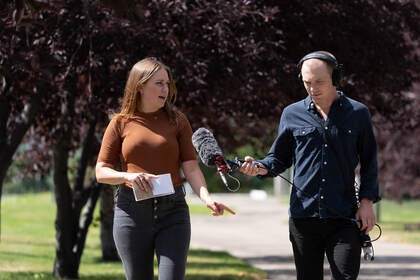
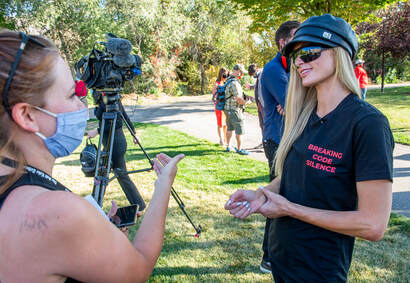
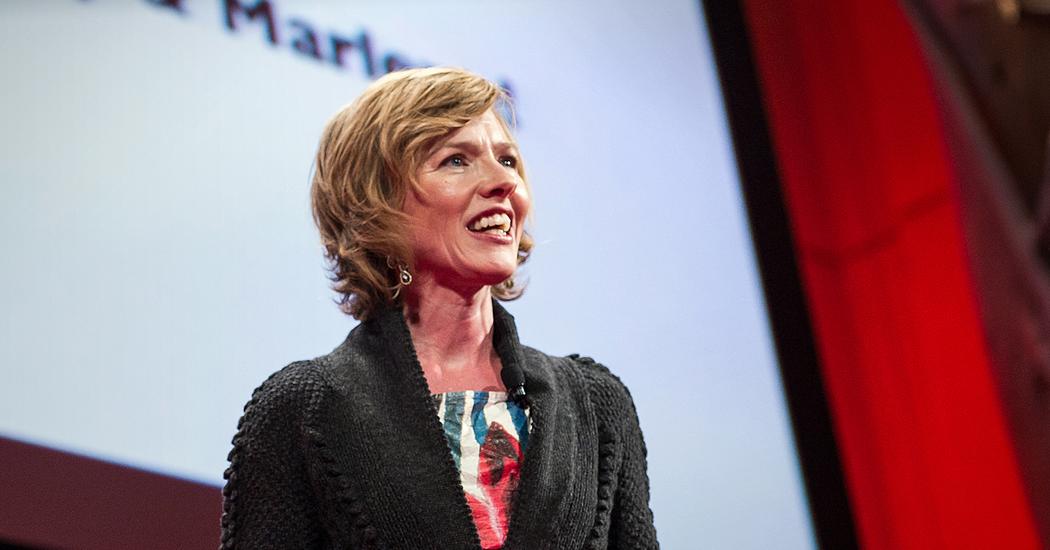
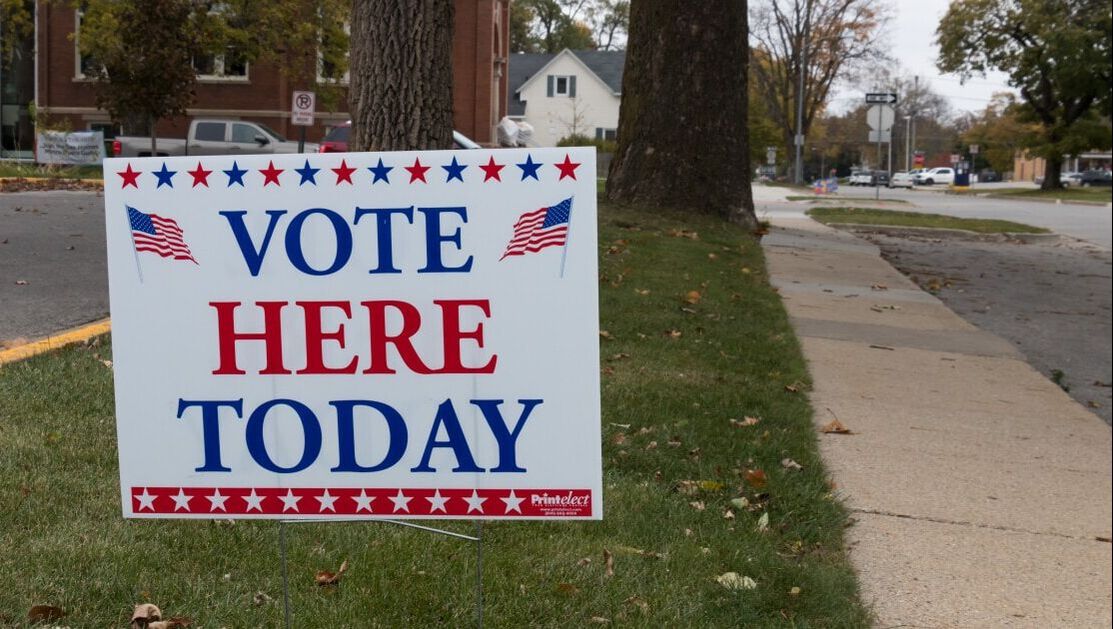
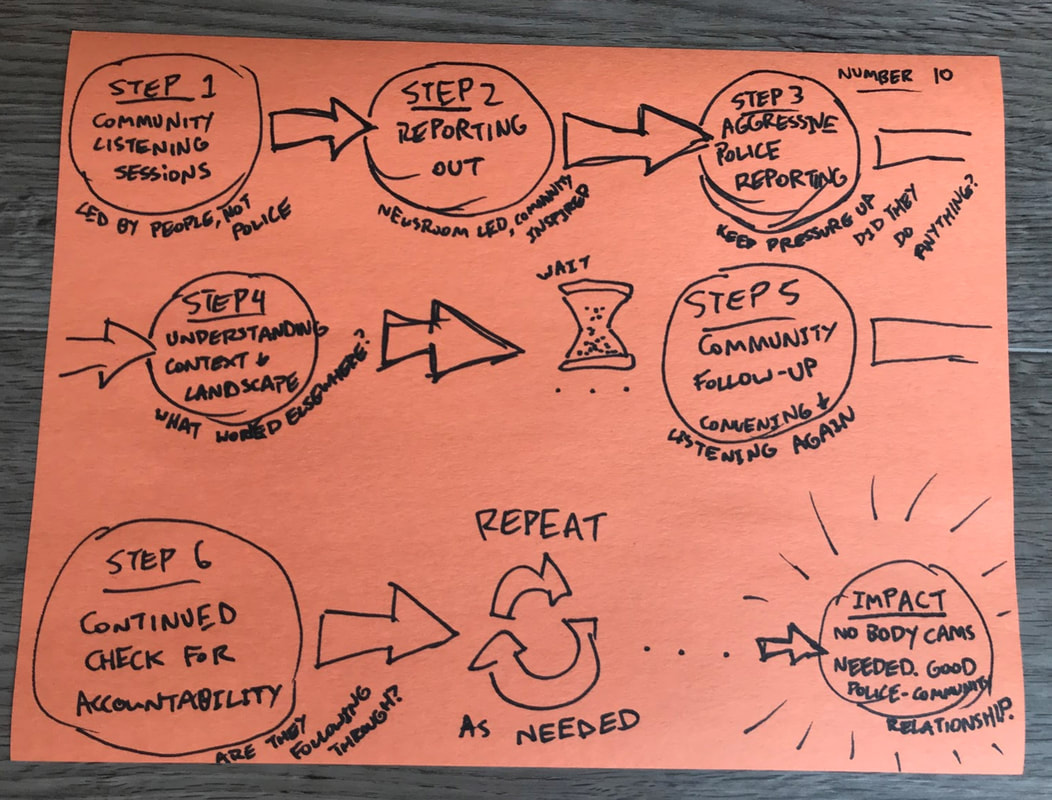
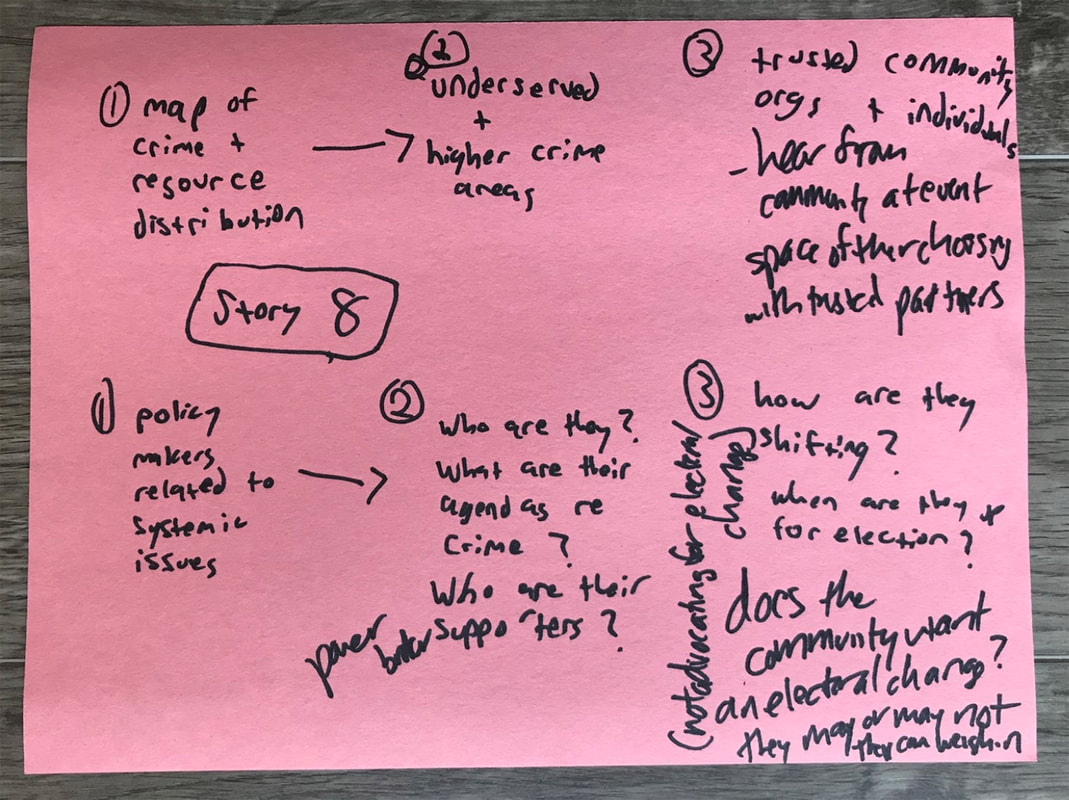
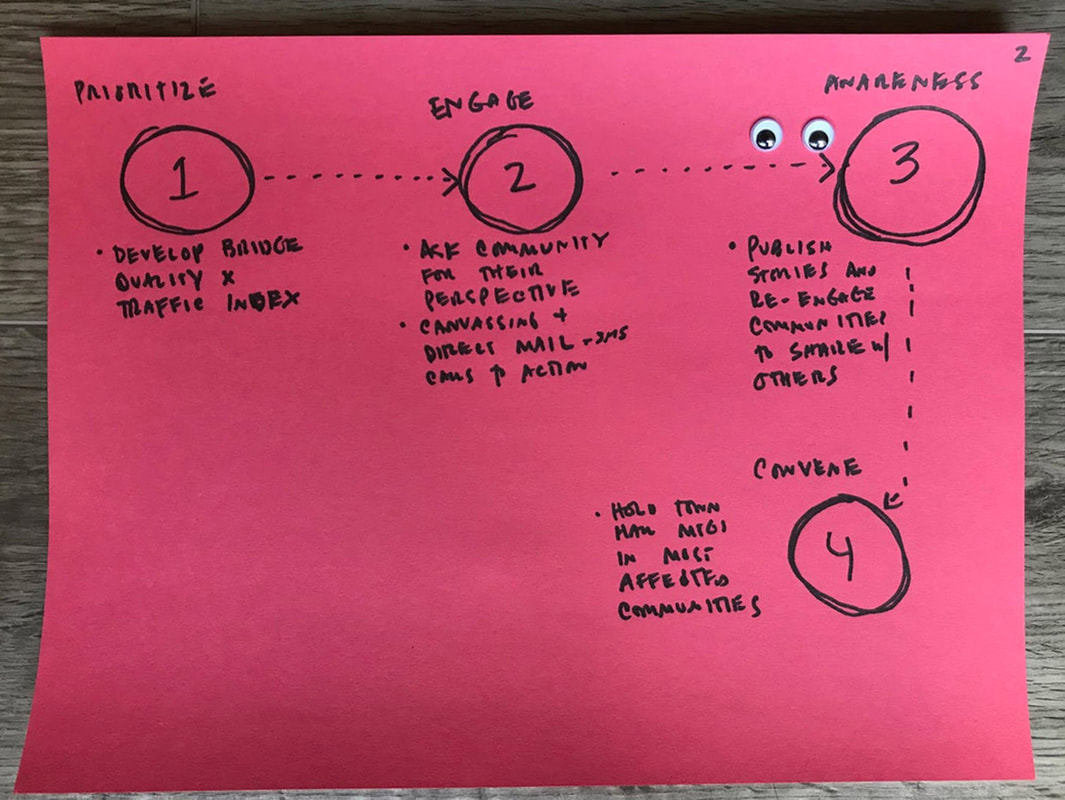
 RSS Feed
RSS Feed